beyond Boracay- the Caluya islands, part 1
For a region so blessed with some of the best beaches in the Philippines, Western Visayas has an enviable northwestern arc from Aklan to Antique which is spoilt for choice when it comes to tourism. The headliner undoubtedly is Boracay island in Malay, Aklan which is frequently mentioned as one of the best beaches in the world. However, further west is a group of islands which boasts of the same fine sandy beaches and rugged forested terrain that have potential for development. This group of island is Caluya.
the beach of barangay Imba, Caluya island, Antique, Western Visayas, the Philippines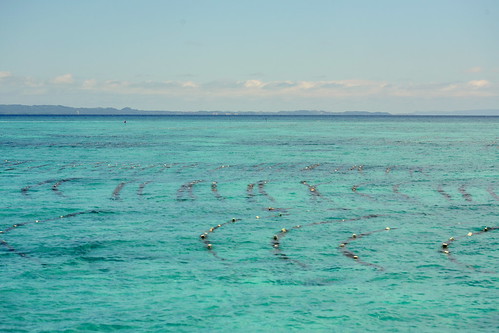
a glimpse of the seaweed farms on the reef of Caluya
Sibato, Sigay, Panagatan, Semirara, Sibolon, Dinago and of course Caluya, are the major islands of Caluya. Politically belonging to the province of Antique, Caluya has a total population of around 25,000.
long lines of styropor floaters being cleaned along the coast of Imba, Caluya Island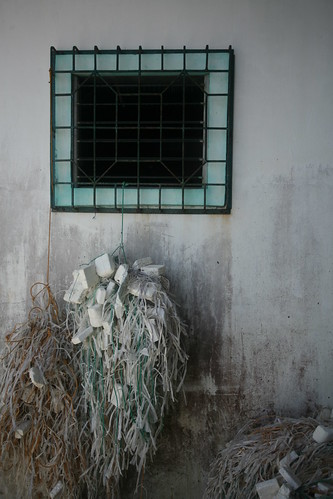
empty seaweed-farming lines being readied for seedling tying
Of late, it is probably Semirara which has gained some name recall, specifically as a rich source of coal. Notwithstanding this recent rise, coal mining is not the main industry of the Caluya group of islands. Neither is it fishing although many would have assumed this to be the case as the network of islands is on a healthy and thriving reef. Agriculture would be the next easy guess. Close but not quite. The biggest “employer” actually is seaweed.
seaweed being hang-dried immediately after harvest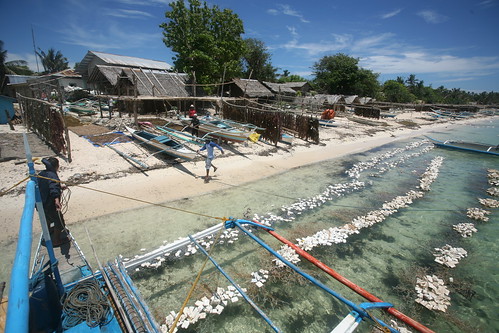
seaweed lines with floaters being cleaned along Imba coast
By most estimates, some 70 to 80% of the people in the Caluya group of islands are into seaweed farming, wherein seaweed of the cottonii variety is grown in long and extensive lines in the sea covering several hundreds of hectares. Such is the success of the industry that today, the islands for the last 15 years or so could harvest several hundreds of dry tons of the produce during summer season.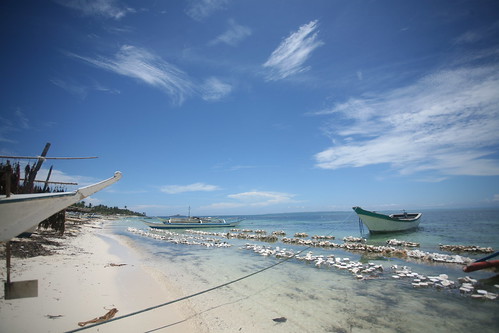
typical beach scene in Caluya Island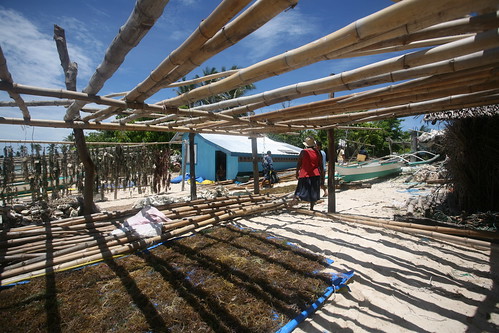
bamboo poles for hanging freshly harvested seaweed
As is becoming obvious by now, where there is seaweed, I need to go. Coincidentally, the most convenient route to these islands is the island of Boracay so business travel cannot be more welcome. 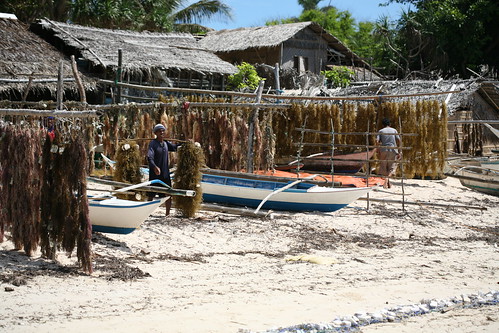
seaweed farmer carrying seaweed for planting
Coming up: Visiting the island
To go: Caluya is 4 hours by ferry from Libertad port of Antique, which is about 4 hours by bus from Iloilo. Other public jump off points are Pandan, Antique and San Jose, Mindoro Occidental. A convenient alternative is hiring a private boat from Boracay Island, which is some two hours away.






5 comments:
hello: i'm not sure if i mean to leave a comment or simply contact you for more information, if you are inclined. m comment would be: thank you immeasurably for posting these photographs and writing a bit about seaweed. i'm a novelist currently working on a story that features seaweed farming--not in your area but in east africa, though the seaweed i'm imagining is grown in the shallows. i've read everything i can find, but i'm having trouble imagining/picturing how the seaweed is actually removed from the water and taken up to the shore. that is, i wonder if it happens at low or high tide, if any boats are necessary, if knives might be used. the literature i've found so far sometimes elides deep-water and shallows methods and i'd like to get the details right. if you're at all inclined to communicate with me...(and i imagine you, like all of us these days, are very busy)...i am also contacting friends in east africa who are involved in seaweed production, but would like to know as much as i can---the actual setting of the novel is not a 'real' one in the sense of being in an 'actual' place.
my proper email address is nkoenings@gmail.com
yours,
n.s. koenings.
nathalie- seaweed is grown commercially in Tanzania and Madagascar. There are several entries on Tanzania seaweed in this blog as well as in my flickr account (under the name Farl). Harvesting is done only during low tide, often with boats for efficiency. Farmers remove entire lines and bring them to shore. Knives could be used to cut lines from the stake but not necessarily. Definitely, seedling preparation (tying of small fronds) is done on the shore.
Wow great, lovely photos. There a good atmosphere there, mostly at nightlife...
Tanya Gemarin
Your post inspired me to go to Caluya too.Here's my report.Thanks for making me aware of seaweed farming
http://nickrostron.com/caluya-seaweed/
Your post inspired me to go to Caluya too.Here's my report.Thanks for making me aware of seaweed farming
http://nickrostron.com/caluya-seaweed/
Post a Comment